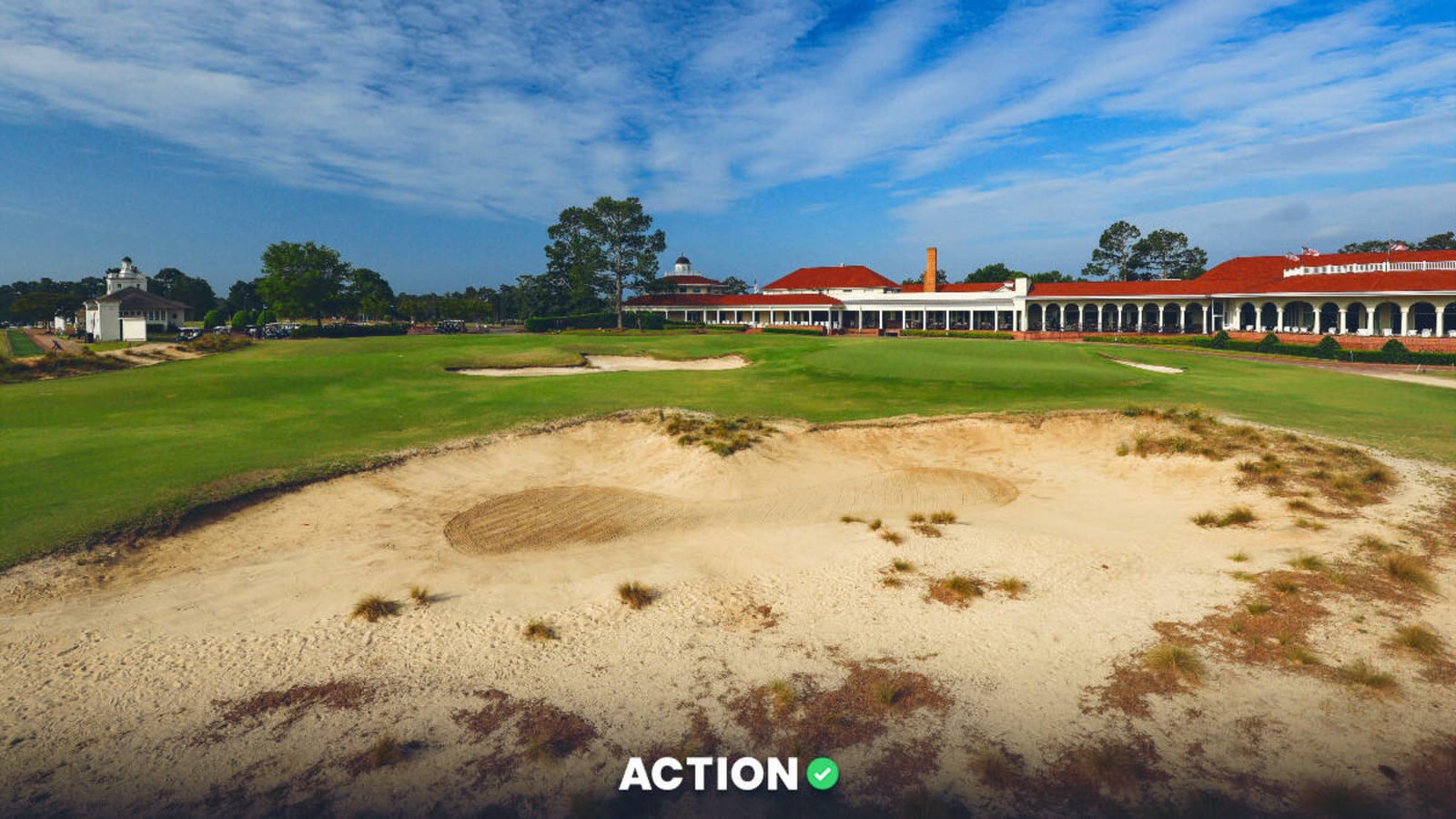
The golf world descends upon Pinehurst, North Carolina, for the third men's major championship of the year as Pinehurst No. 2 hosts the 2024 U.S. Open.
Pinehurst No. 2 is a long 7,543-yard par-70 designed by Donald Ross originally in 1907, restored by Rees Jones in 1999 and most recently restored by Bill Coore and Ben Crenshaw from 2009-11.
The course switched to Champion ultradwarf bermudagrass from bentgrass in 2014 after hosting both the U.S. Open and U.S. Women's Open in consecutive weeks.
This is the first ever U.S. Open competed on Champion ultradwarf bermudagrass greens, and it is also the first time that bermudagrass greens will be featured on the PGA Tour since the Arnold Palmer Invitational in March (among non-opposite-field events).
The average green size at Pinehurst No. 2 is relatively large at 6,500 square feet. The fairways, tees, collars and approaches all feature Tifway 419 bermudagrass.
The greens at Pinehurst No. 2 are known for their unique domed shapes that are often described as turtlebacks or like an upside-down saucer. While the greens are large, they will play significantly smaller because less precise approach shots will bounce away from the center of the green, and consequently, there will be an even more significant emphasis on quality approach play this week than usual.
Perfection pic.twitter.com/MlZpMDE8vV
— U.S. Open (@usopengolf) June 8, 2024
Those who miss the landing areas in the fairways at an average of 35-45 yards wide will find the sandy native areas littered with wiregrass.
While the fairways are relatively wide, Ross' design often includes undulating landing areas such as swells, tilts or dips. The fairways at Pinehurst No. 2 also often run at unsettling angles that are intimidating off the tee and careen around the sandscapes, which makes off the tee play difficult.
Golfers will need to get lucky if they find the native areas to avoid tricky wiregrass lies that allow only a pitch out to the fairway. Compared to the last U.S. Open in 2014, the native areas have grown in more, which will pose a bigger challenge for wayward golfers off the tee. The native areas were incorporated much more significantly throughout the property as a major part of the Coore & Crenshaw renovation.
Additional wiregrass plants have also recently been added near the landing areas for this week's U.S. Open and will be relocated after the championship so that regular play won't be slowed down. Overall there are 40 native sandscapes, 117 sand bunkers and only one water hazard (penalty area).
U.S. Open rough, Pinehurst style... pic.twitter.com/oYuqJ1zKfp
— Pinehurst Resort (@PinehurstResort) June 7, 2024
The course roughly 100 miles east of downtown Charlotte features just two par-5s along with four par-3s which all have scorecard yardages from 184 yards to 228 yards.
Pinehurst No. 2 also includes 12 par-4s, with seven of them listed at least 470 yards. Between the longer par-4s and lengthy par-3s, iron play from at least 175 yards will be at a premium.
There are no par-4s shorter than 381 yards, so there likely won't be any drivable par-4 opportunities this week. Combine this with only two par-5s playing long at 617 yards and 588 yards, respectively, and scoring opportunities will be extremely tough to come by this week. This helps put into perspective how only three golfers (Martin Kaymer, Rickie Fowler and Erik Compton) broke par here in 2014.
| Hole | Par | Yards |
|---|---|---|
| 1 | 4 | 395 |
| 2 | 4 | 500 |
| 3 | 4 | 387 |
| 4 | 4 | 528 |
| 5 | 5 | 588 |
| 6 | 3 | 228 |
| 7 | 4 | 426 |
| 8 | 4 | 492 |
| 9 | 3 | 184 |
| 10 | 5 | 617 |
| 11 | 4 | 478 |
| 12 | 4 | 486 |
| 13 | 4 | 381 |
| 14 | 4 | 472 |
| 15 | 3 | 197 |
| 16 | 4 | 536 |
| 17 | 3 | 207 |
| 18 | 4 | 448 |
Key Metrics for Pinehurst No. 2
- Total Driving (I'll also be incorporating Distance From the Edge of the Fairway in addition to Driving Distance and Driving Accuracy this week)
- Weighted SG: Approach (With emphasis on 175+ yards)
- SG: Around the Green
- SG: Total on Long & Difficult Courses
- Bogey Avoidance (More emphasis than usual)
- SG: Putting
- 3-Putt Avoidance
- Putting from 5-10 Feet
More must-reads:
Breaking News
Trending News
Customize Your Newsletter
 +
+
Get the latest news and rumors, customized to your favorite sports and teams. Emailed daily. Always free!








